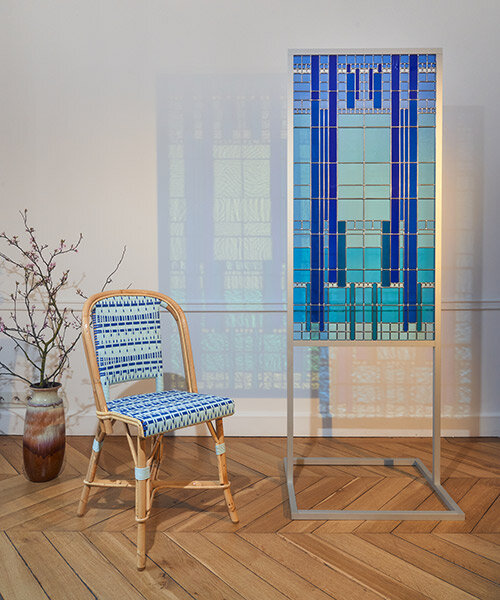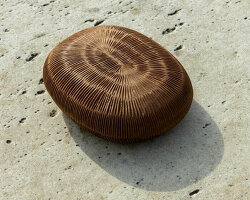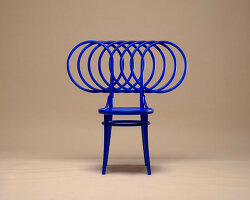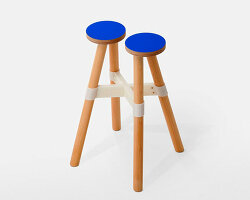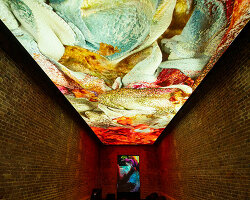blending the old and new with generative interiors
TRAME, a Parisian gallery and collaborative studio, is revolutionizing interior design with Generative Interiors, an innovative concept which uses algorithmic design to create patterns and colors across various mediums from tapestry to stained glass. Generative Interiors comprises four collections which represent a significant shift in the design landscape, looking toward both the future and the past. By departing from conventional design methods, artists working with TRAME are developing streamlined algorithms to create personalized furniture pieces and design objects. By adjusting the input, these objects can be easily adapted to individual preferences and lifestyles, before being fabricated by traditional craftsmen. TRAME unveiled this groundbreaking concept at NFT Paris in February 2024, showcasing the limitless possibilities of generative design in shaping living spaces. In an interview with designboom, founder Ismail Tazi says, ‘These collections are just the beginning of that conversation.’
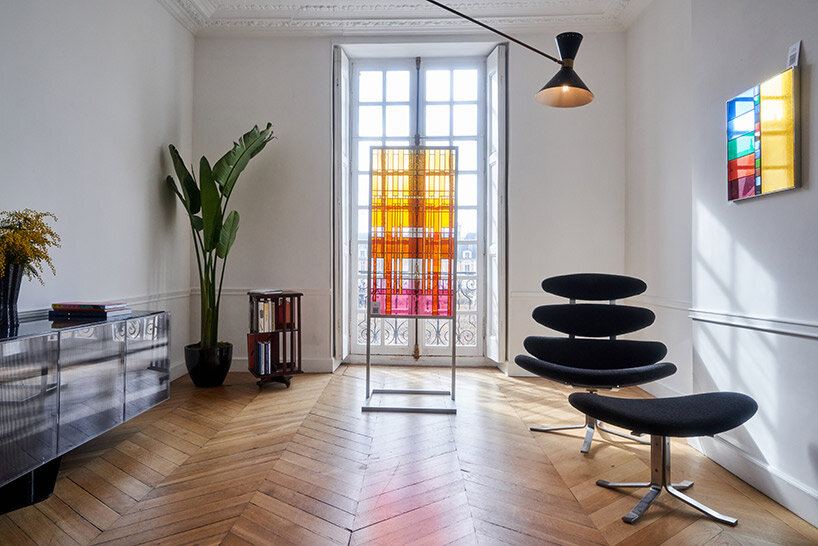 Generative Interiors, gallery image | images courtesy TRAME
Generative Interiors, gallery image | images courtesy TRAME
The journey of trame
Founded in 2020, TRAME‘s mission is to bring together a diverse community of contemporary voices, including artists, designers, architects, and collectors. Guided by thoughtful curation, TRAME charts a course toward a future that honors tradition and embraces innovation.
With a background in infrastructure development and ceramics, Ismail brings a unique perspective on the transformative power of design. Joined by Head of Brand Jaime Derringer, founder and former head of Design Milk, TRAME is contributing to vast experiences in the design industry. Together, they are taking TRAME in a new direction: exploring how technology can enhance and reimagine traditional craftsmanship.

Generative Interiors, gallery image
craft Nouveau Collections: Where Code Meets design
TRAME’s collaborative collections start with an immersive session that brings artists and artisans together to exchange ideas, techniques, and inspirations. This meeting of physical and digital is one that carries through the entire process, in which the resulting pieces are a testament to the ability for heritage craft and technology to co-exist and thrive.
The Craft Nouveau collections exemplify the power of these collaborations. ENLACE by Aranda\Lasch and Maison L. Drucker reinvents the woven Parisian café chair using generative design techniques. It integrates traditional craftsmanship with digital innovation by creating unique weaving patterns that capture the essence of the weaver. Optimism by Jeff Davis is a groundbreaking stained glass project which explores colored light as a medium. The project combines generative scripts, NFT minting, and aluminum framework to represent the culmination of Davis’s creative journey, blending tradition, technology, and creative innovation into a visionary artwork that expresses a brighter and more harmonious future.
Portraits by Martin Grasser, involves the use of generative algorithms to transform letters into abstract forms. Collaborating with TRAME, Grasser incorporates Venetian glass into his art, creating interactive mirrors that invite viewers to participate in the narrative. Navette by Alexis André is a debut collection of Craft Nouveau which features a series of coded artworks brought to life as tapestries. All of TRAME’s collections are created in collaboration with Art Blocks Engine.
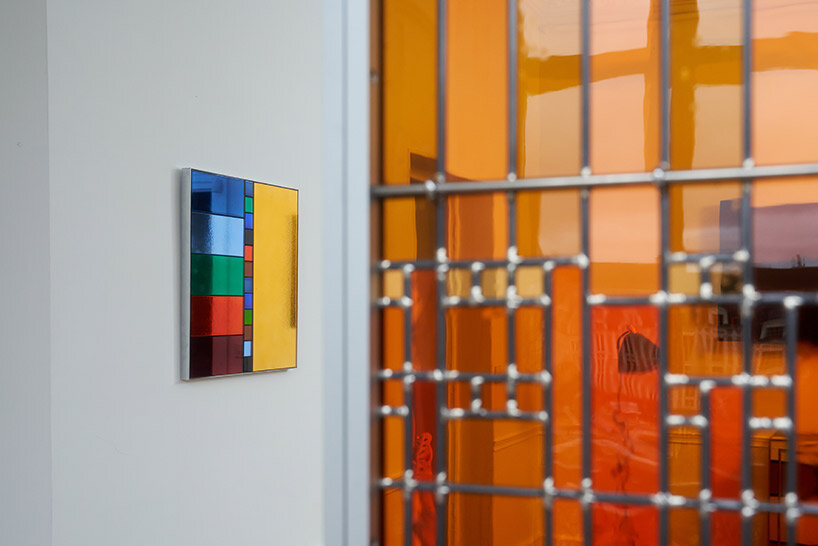
Generative Interiors, gallery image
TRAME’s Generative Interiors concept is the idea that one’s interior can be customized and adapted to individual preferences. This level of customization ensures that each TRAME-curated space reflects the client’s unique personality and lifestyle. TRAME’s commitment to quality craftsmanship is evident in the meticulous attention to detail during the manufacturing process. Artisans from around the world bring their expertise to life, ensuring that each piece meets the highest standards.TRAME will be showcasing its work at ICFF in May. Looking ahead, they want to push the boundaries of design innovation even further, exploring new mediums, technologies, and collaborations. The concept of Generative Interiors serves as a catalyst for ongoing experimentation, inviting clients to reimagine their living spaces in exciting ways. By staying true to their vision of bridging art, design, and technology, TRAME is shaping the future of interior design, one dynamic space at a time.
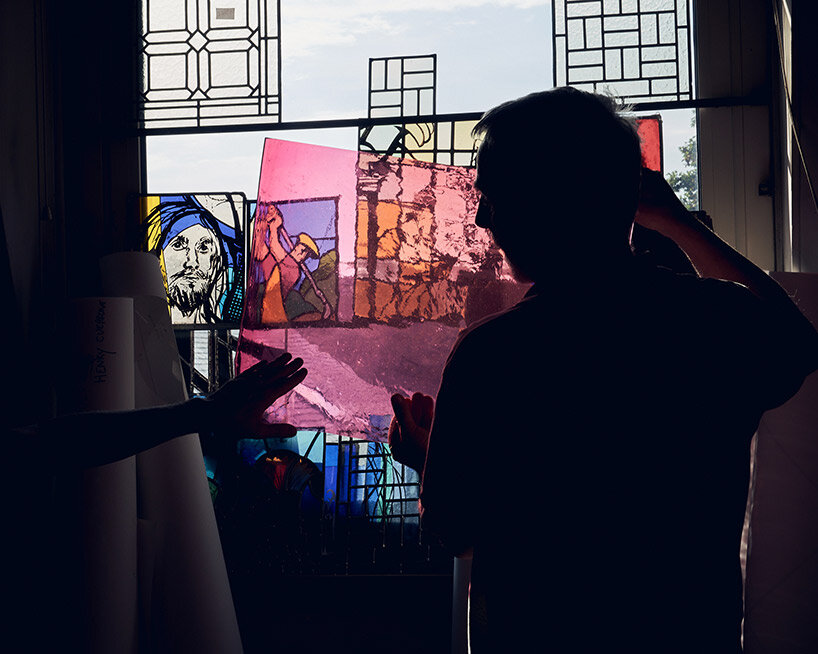
Optimism by Jeff Davis (process)
in dialogue with TRAME
designboom (DB): What is TRAME? How did it all begin?
Ismail Tazi (IT): I am the founder of TRAME, which started in 2020 with a strong innovation DNA. I was born and raised in Morocco, and part of my family is in craftsmanship. I started TRAME with a very American way of doing things, which I learned during my time in America. As I learned more about craftsmanship, design, and art, I began to look for an intersection between craftsmanship and new technologies. TRAME today is about the art and design of the future, where the creative vision of artists and designers is expressed in both the digital and physical worlds. That’s what TRAME does through our various collections.
We did a collection of tapestries, café chairs, mirrors, and sculptural stained glass. We are fundamentally collaborative — bringing artists, designers, and craftsmen together to unveil this future. That makes sense from a culture perspective, given this revolution that we are going through.
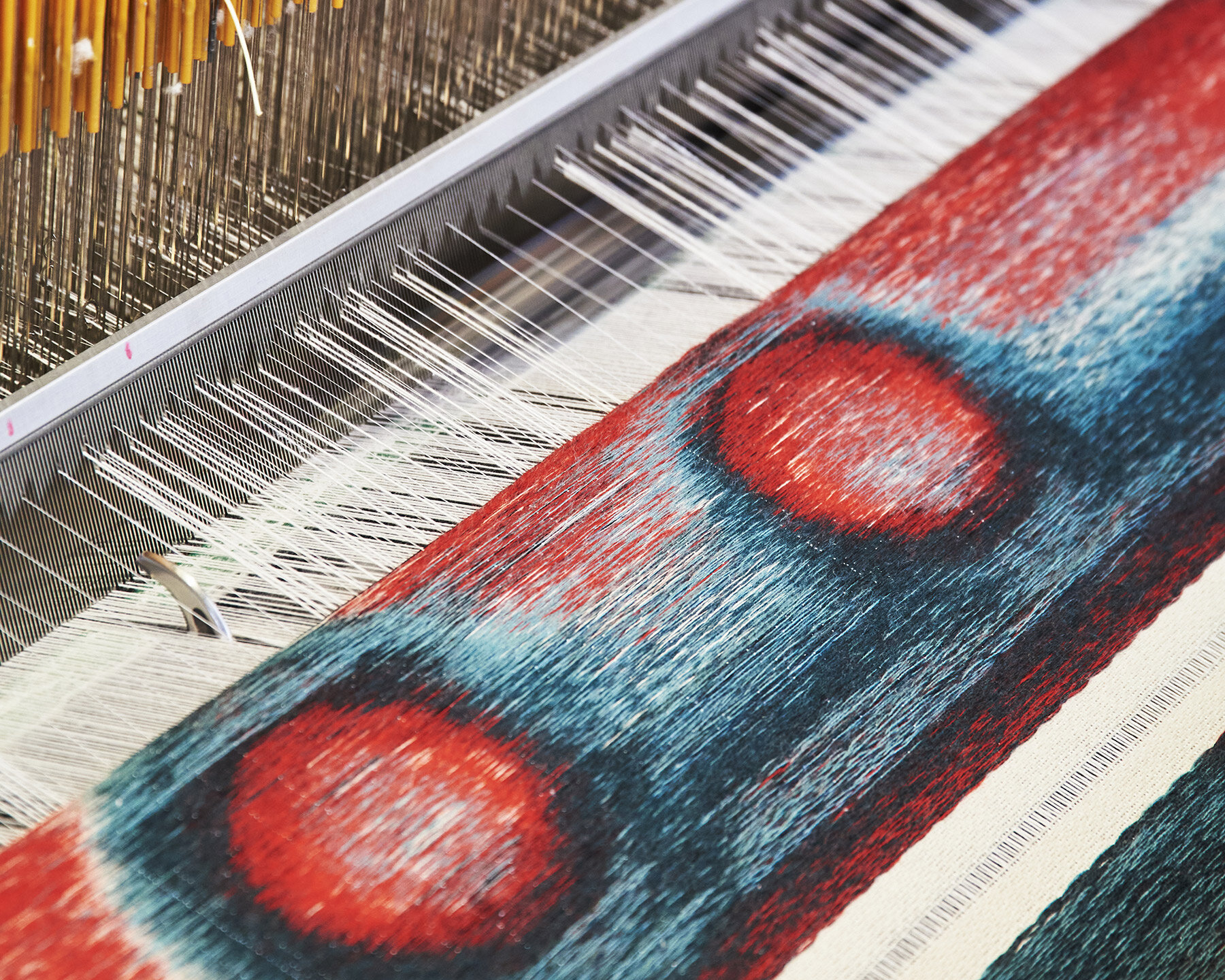
Navette by Alexis André (process)
Jaime Derringer (JD): I come from the media world originally, I founded Design Milk, a digital design magazine covering everything from art and architecture to technology. Technology was always super interesting to me, but having talked with designers over my fifteen year career, I appreciate physical design, the creative process, and craft. In 2021, I went down the Web3 rabbit hole and began making NFTs, because I’m also an artist. I have always been interested in how new technology intersects with everyday life. Despite both coming from the design world, Ismail and I met in a Web3 community. About a year later I joined TRAME as Head of Brand, helping to tell the stories of the design and the creative process behind our collections.

Optimism by Jeff Davis (process)
DB: Can you give an overview of Generative Interiors? How do you describe generative art?
IT: Generative Interiors is about an interior in which the various objects and furniture are from a ‘generative design’ collection. Generative design, or algorithm-based art, allows for a whole collection in which every piece is unique. It can be ten, one hundred, or ten thousand pieces, but each is unique. Just like humans — we are all human beings, but we each have our set of traits that makes us unique. A generative interior will include entirely unique furniture and artwork. That is powerful because, as a generative art collector myself, many collectors can own a piece from the same collection, but each a different one.
JD: I think that the uniqueness of generative art and design is what’s really cool about it. Everybody may have different objects with a common thread between them, but yours remains unique. What started as an art movement can translate into the design world and we believe this is the future of design.
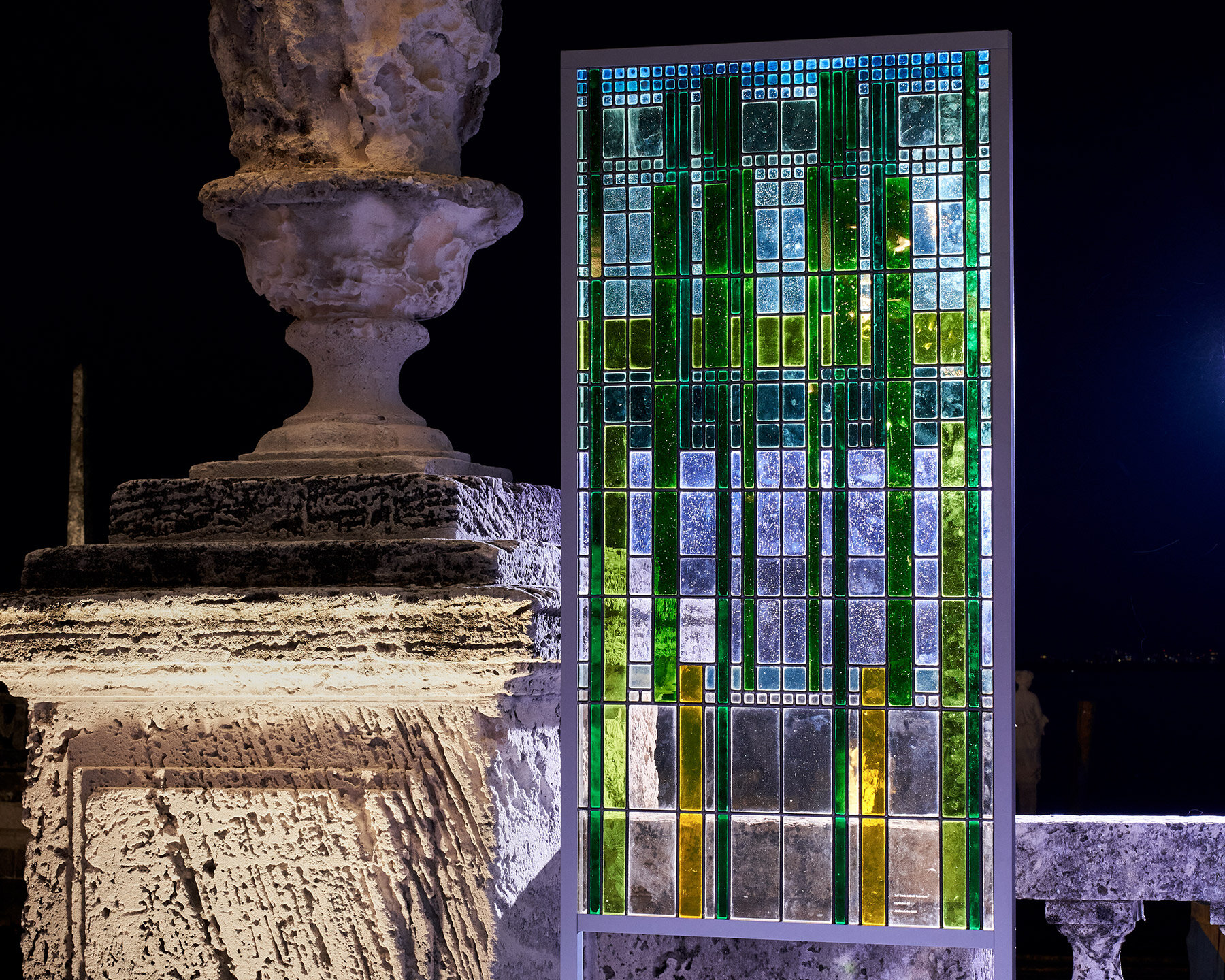
Optimism by Jeff Davis
DB: Generative Interiors involves four different artists working in collaboration. Are they all using the same algorithms, or are they each bringing their own unique generative process?
JD: The Generative Interiors concept envisions a future where homes and furnishings are designed generatively. This allows for the creation of a truly unique and personalized expression of yourself within your living space. These collections we are presenting are just the beginning of that conversation. Each collection is distinct, featuring collaborations between generative artists and artisans or craft manufacturers. As I mentioned, the algorithms are actually coded by the artists themselves. They factor in their experience, discussions with the manufacturer, the production process, and the physical nature of the final pieces. This interaction between artist and algorithm is what makes these collections so fascinating.
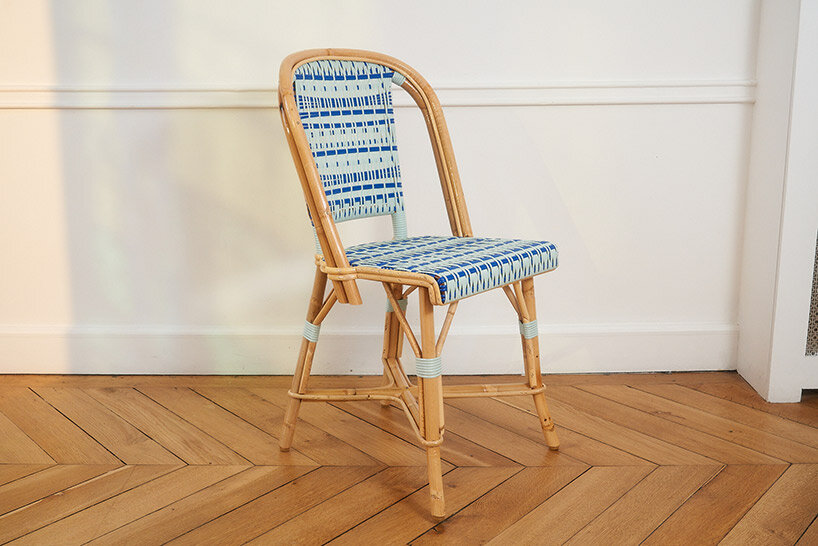
ENLACE by Aranda\Lasch
DB: These pieces are not mass produced. Can you explain how they can be adaptable according to the user’s needs or lifestyle?
IT: As an interior designer, or even as a client, you can use this to generate various options. Then, once you find something you truly like, a unique output that speaks to you, you can actually send it straight to production. It becomes yours, one of a kind. That’s what excites me most. Imagine: two collections, each with one hundred pieces, but one entirely unique and the other identical. They both cost the same, but I believe the collection of unique pieces will hold greater value, resonate more deeply. That’s the vision of generative design.
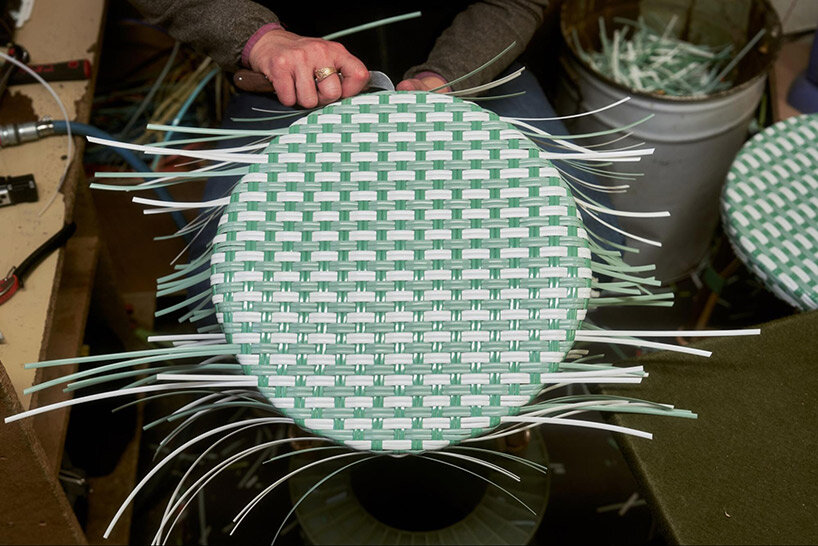
ENLACE by Aranda\Lasch (process)
DB: Can you give us a breakdown of these four collections?
IT: We collaborated with four artists, starting with Alexis André. He flew in from Tokyo to Paris, where I picked him up. We then embarked on a six-hour drive to Aubusson, a renowned region in France – the gold standard of tapestry for over six centuries. If you visit the National Monuments or institutions in Paris, the grand tapestries adorning the walls likely hail from Aubusson.
In Aubusson, there is an amazing digital Jacquard loom. Witnessing their prototyping and sampling process to understand its workings was truly insightful. We even managed to use this loom to manufacture unique tapestries in series — it was very exciting. It’s remarkable how this region, which is steeped in the tradition of Jacquard weaving for centuries, now embraces this cutting-edge digital loom, effectively reinventing the future.
For me, this intersection of Métiers d’Art (high-end craftsmanship in France) with new technologies and algorithmic art represents the future of creation, the very essence of culture. It embodies all that excites us about blockchain, coding, and the like. Infusing the future of creation with craftsmanship — that’s what matters to me.
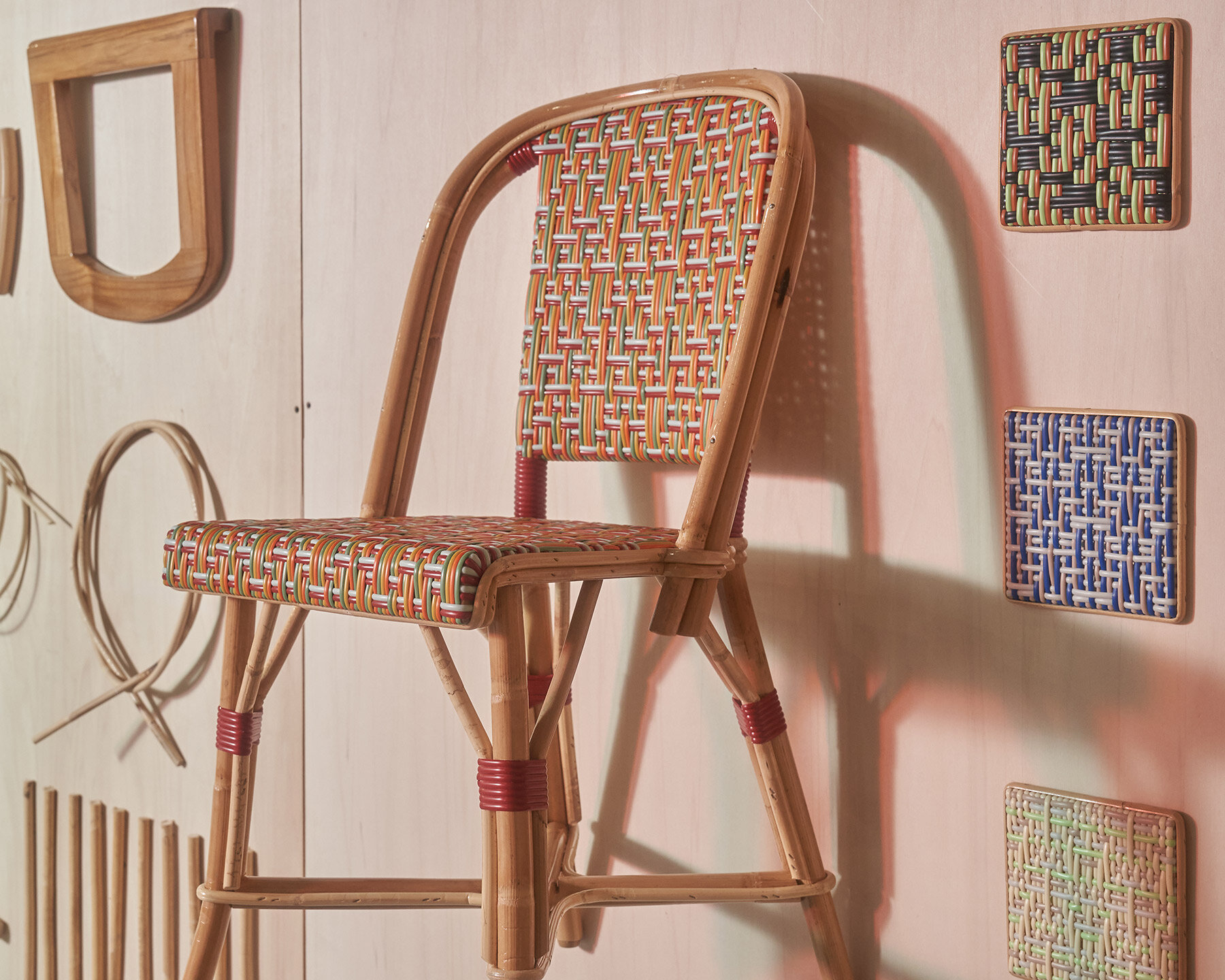
ENLACE by Aranda\Lasch (process)
IT (continued): Another collaboration was with Arizona-based artist Jeff Davis. We traveled to Chartres, France, where we visited the Chartres Cathedral and Atelier Loire. This third-generation stained glass workshop is known for its restoration work on both Notre-Dame and Chartres Cathedrals. Atelier Loire’s library of colors and glass is amazing. It was a moment of pure joy and inspiration. There, we sampled a piece and gained an understanding of the color range and the physical constraints of the medium. This knowledge then informed the algorithm we used to create our own beautiful, self-standing stained glass sculptures.
Our process always begins with physical craft. The tangible informs the digital, which then comes back into the physical world. Our collections come full circle, and I might be a little biased since I was involved, but I truly believe they’re beautiful and a pioneering exploration of generative art’s potential.
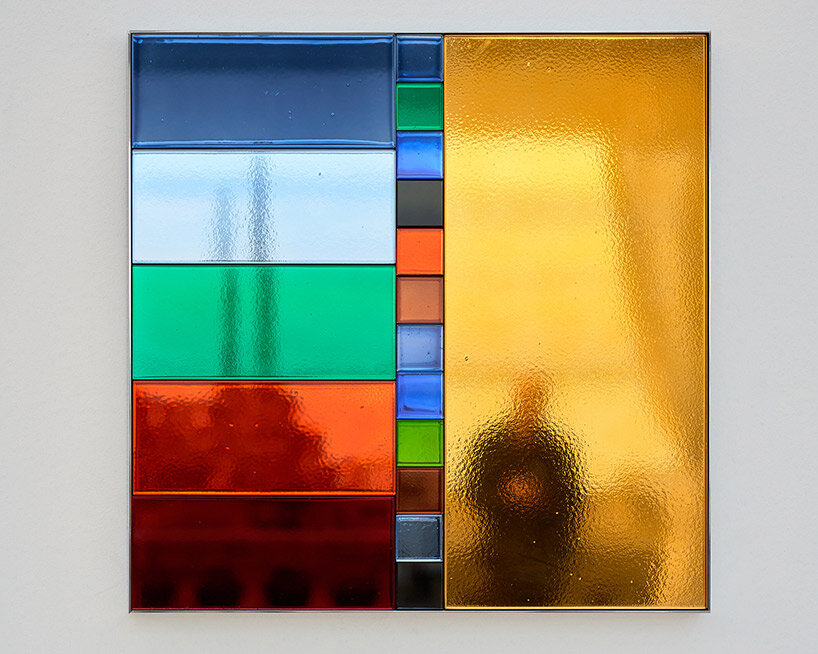 Portraits by Martin Grasser
Portraits by Martin Grasser
IT (continued): Generative art has existed for a while and creating generative art on the blockchain emerged as a breakthrough. Like any digital creation, blockchain gives art authenticity, provenance, and credibility. These technical advancements allowed digital art to be traded, and so on. However, most of the collections you might read about in traditional media, referring to NFTs as art, were purely digital. Now, through this artistic journey, as Jaime mentioned, we’re combining generational craftsmanship with generative art. It’s a whole new territory for this art form, a world championship in uncharted lands.
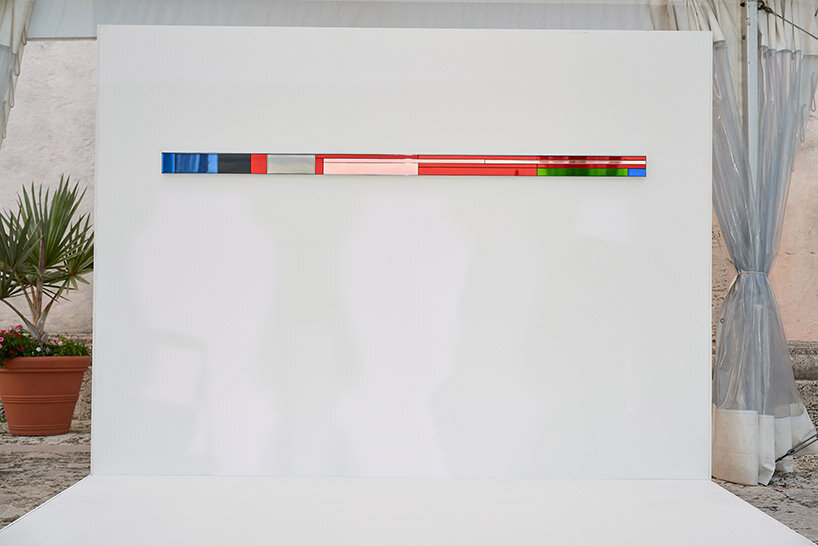
Portraits by Martin Grasser
DB: In recent years we’ve noticed a growing fatigue with purely digital art in favor of a renewed love for traditional, handcrafted processes. It’s exciting to see this blend — the future with its developing technology meeting the love that designers have for creating things with their hands.
IT: At Milan Design Week 2022, we showed a collection of 3D printed clay at Alcova. Coming from a family that does ceramics, my generation bridges the gap by 3D printing clay. It’s a new form of digital craftsmanship, and I’m super proud of it. We previewed the collection at the Institut du Monde Arabe in Paris, before we took it to Alcova. We had phenomenal success there. Now, we’re moving forward, keeping craftsmanship at the heart of tomorrow’s creation.
DB: The next generation of designers is seeming to reject ubiquitous plastic while maintaining an interest in 3D printing itself.
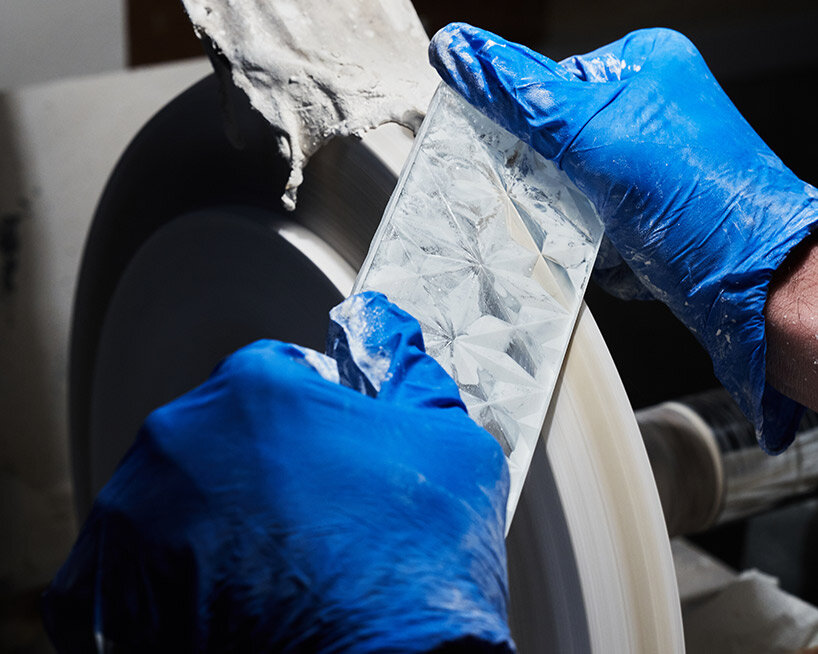
Portraits by Martin Grasser (process)
DB: How did these traditional craftsmen respond to your projects for Generative Interiors?
IT: Some craftspeople, threatened by what they don’t understand, resist change. But the best are truly curious and embrace it. They’re eager to learn and innovate. For them, this is really exciting. Coming from a family of artisans myself, I understand their perspective. When I created collections in Morocco in 2020, I did the glazing myself — prepping the mixture, firing the pieces, and retrieving them the next day. This hands-on experience let me communicate with them effectively, building trust, which is crucial.
Seeing their creations displayed in stunning interiors and acquired by prestigious collectors, along with the well-deserved recognition they receive, strengthens this bond even further. It allows us to expand and explore new possibilities. These are the use cases that bridge the gap for the next collection in a different category.
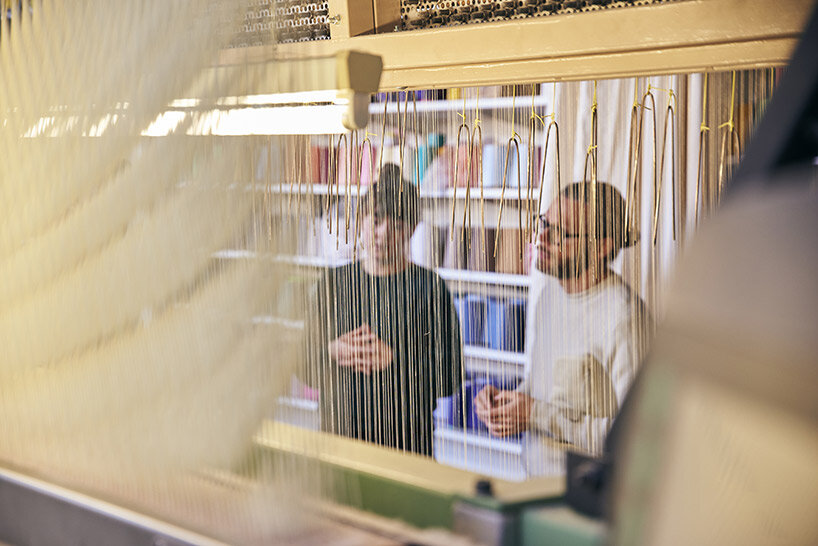
Navette by Alexis André (process)
DB: What do you see in the future?
JD: As our world becomes increasingly digital and AI pervades every aspect of life in the coming years, ensuring the longevity of human craft and techniques is really important. The human touch, be it from a creative or manufacturing perspective, will only become more valuable as technology advances. We’re really excited to help contribute to that.
DB: Are you using AI in your process, or will these collections remain strictly algorithm based?
JD: We haven’t used AI, I’ve been calling it ‘human coded, handcrafted.’ There’s a human touchpoint at every intersection of what we do.
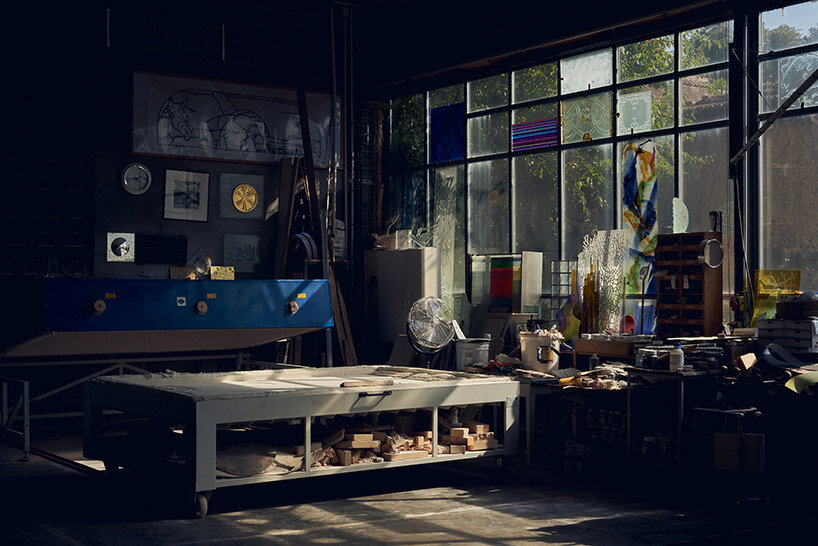
Optimism by Jeff Davis (studio)
DB: What are your views on AI?
IT: AI, like code-based art, phones, social media – is what we make of it. What truly excites me is how AI can expand human abilities and creativity. Open source AI itself isn’t the biggest opportunity, in my view. It’s individuals – artists, brands, maybe even AI companies — who can leverage their creative minds with AI, just like calculators expanded our ability to calculate.
Remember the drama around calculators being banned from math exams? Now, calculators are accepted — we use them alongside our own knowledge. I believe AI will follow a similar path.
We need to find the right balance, ensure it enhances our humanity, not replaces it. With algorithmic art, I’ve already explored how to maintain human craftsmanship. But how can AI directly apply to my work? That’s a question I’m still exploring.
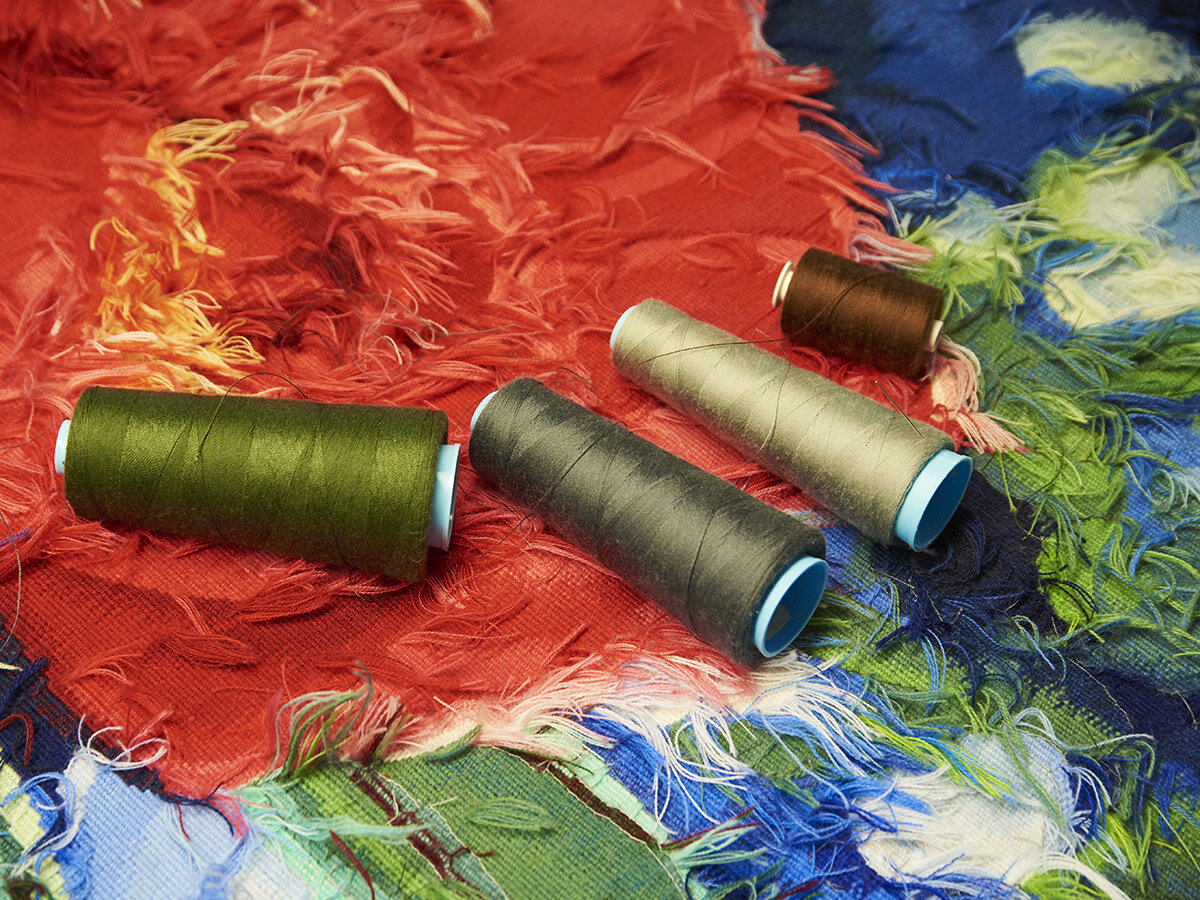
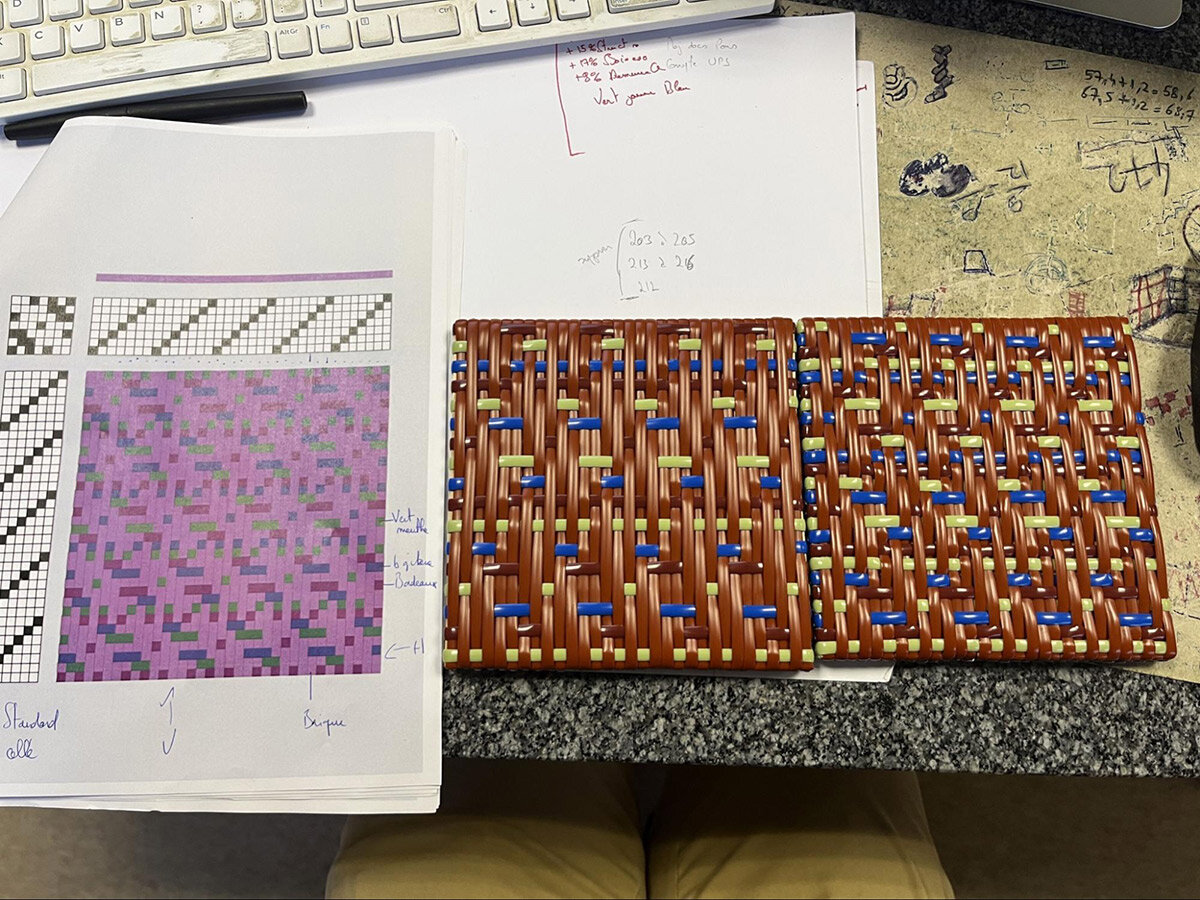
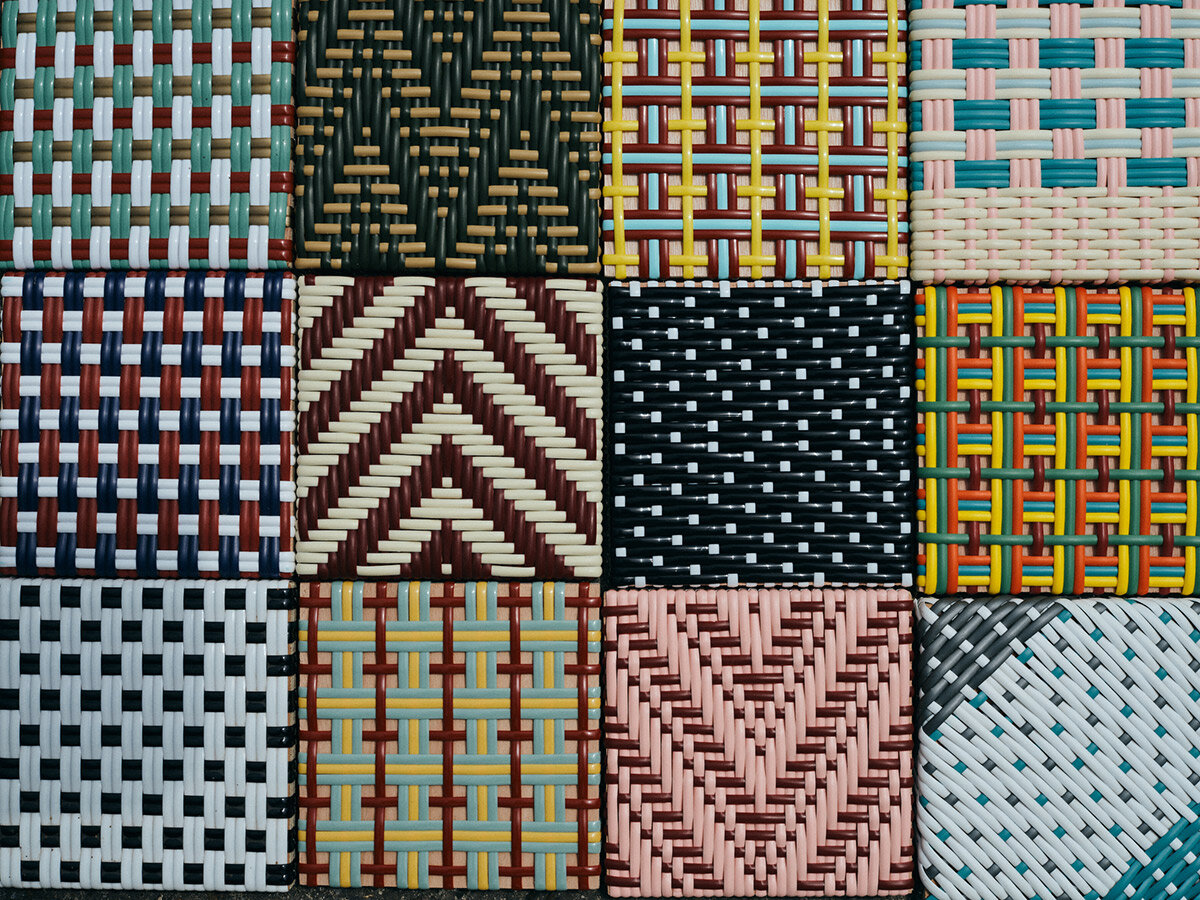
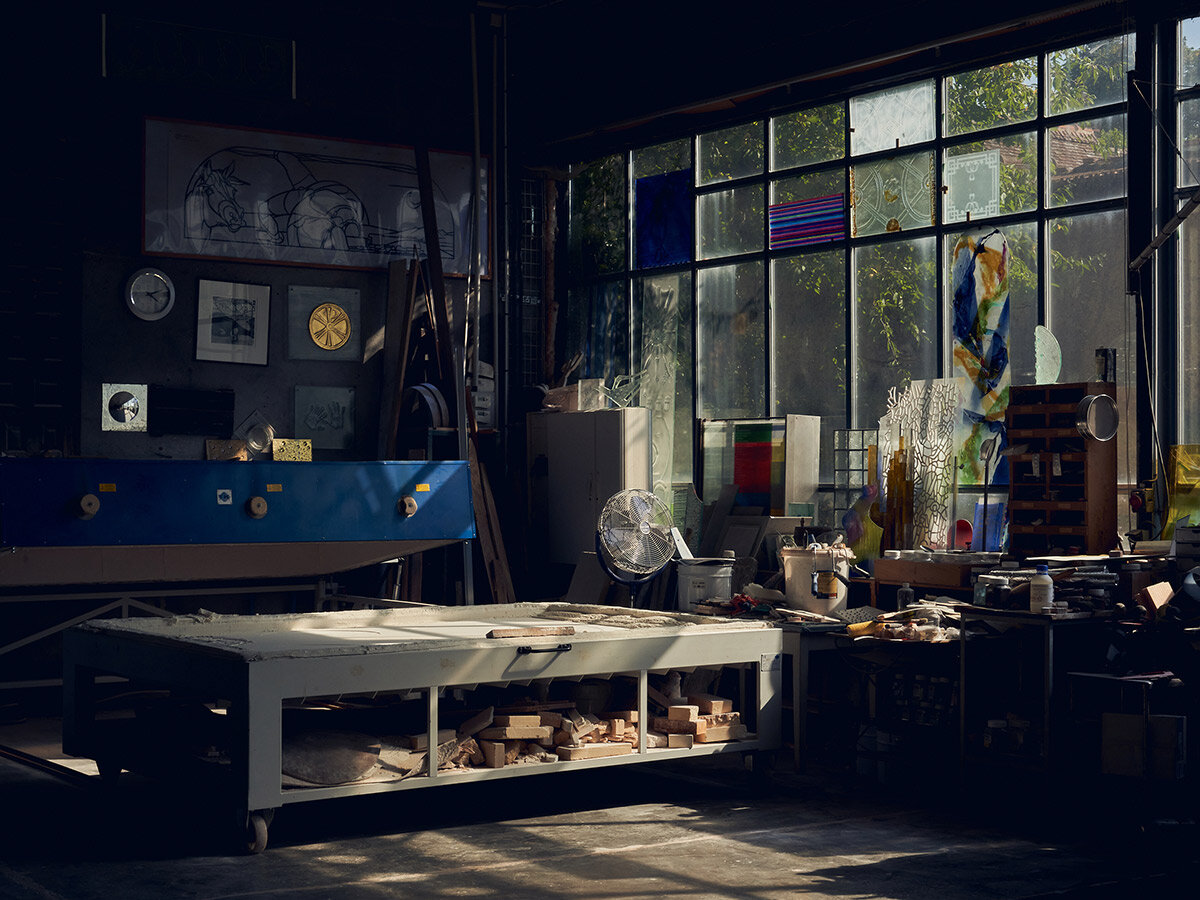
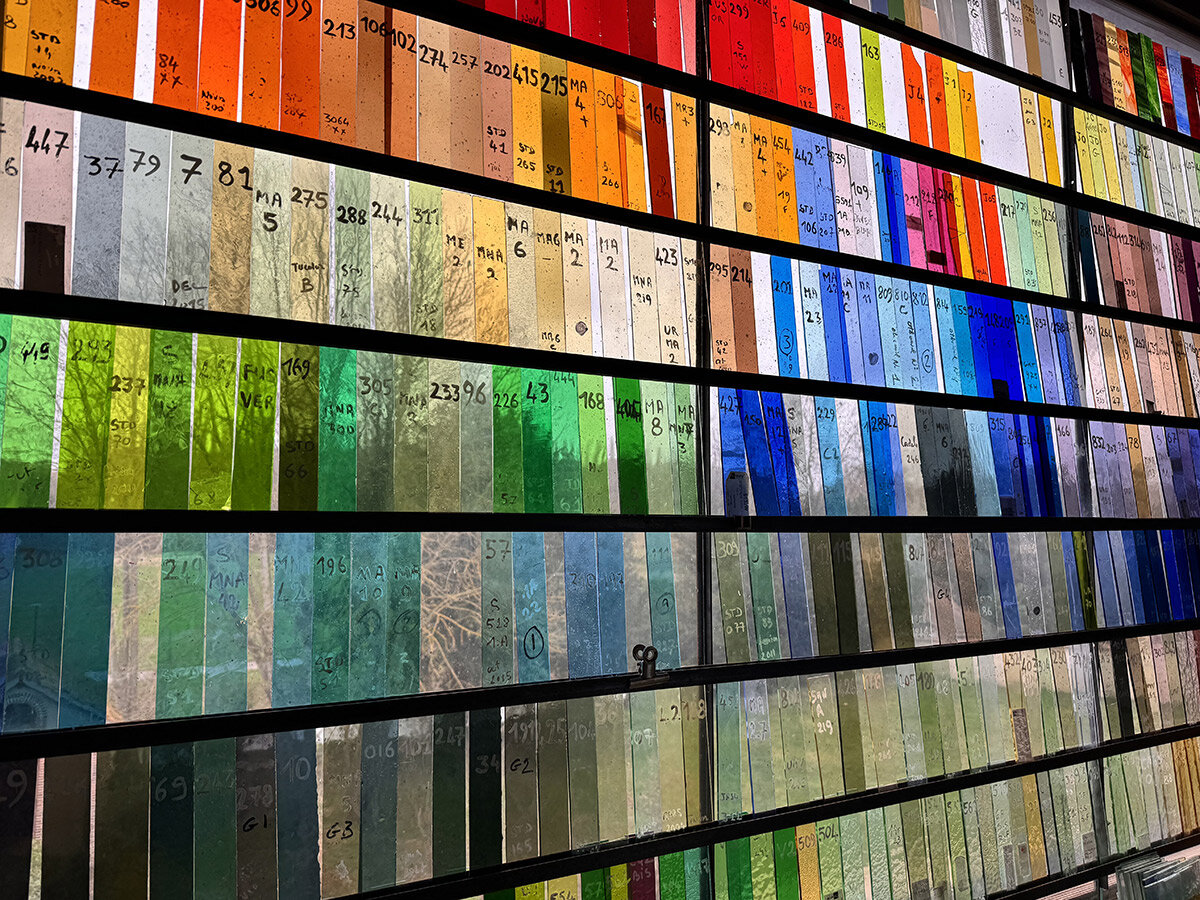
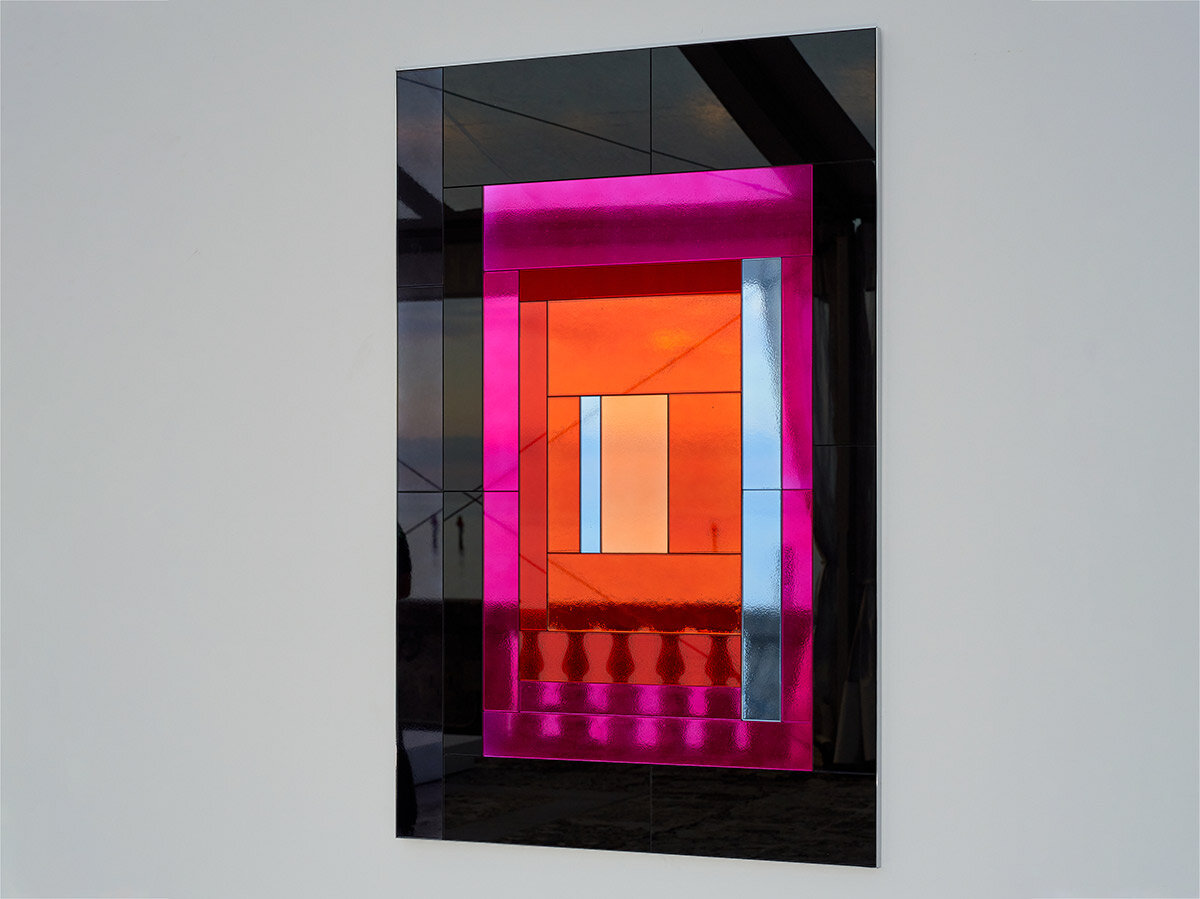
project info:
exhibition title: Generative Interiors
gallery: TRAME | @trameparis
collections: ‘Enlace’ by Aranda\Lasch, ‘Navette’ by Alexis André, ‘Optimism’ by Jeff Davis, ‘Portraits’ by Martin Grasser
CHAIR DESIGN (597)
DIGITAL ART (128)
PRODUCT LIBRARY
a diverse digital database that acts as a valuable guide in gaining insight and information about a product directly from the manufacturer, and serves as a rich reference point in developing a project or scheme.
